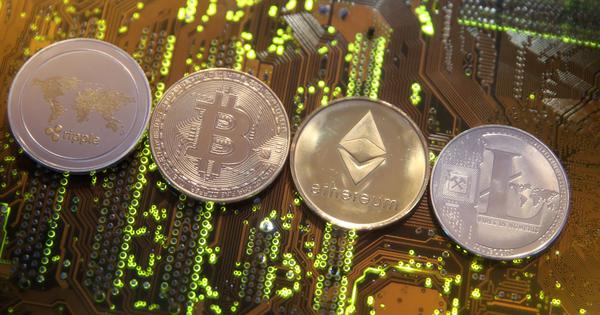What Drives the Surge in Cryptocurrency Trading Among Young Indians, Particularly in Tier-Two Cities?
4 min read
“`html
The demographic primarily venturing into cryptocurrency is younger than 35, comprising tech-savvy individuals like IT experts, individuals with MBAs, engineers, and entrepreneurs. Keen on diversifying, they pour investments into De-Fi assets and NFTs. A noteworthy development in 2021 was the significant influx of female traders – exchanges noted that the proportion of women investors shot up to 30-40%, a substantial increase from the previous year’s 15%.
By late 2021, India boasted 15 native crypto exchanges, with more than 1.5 crore registered users vigorously engaging in transactions. BrokerChooser, a service for finding and comparing brokers, indicated that India had a whopping 100 million crypto traders, well ahead of the United States and Russia. The Blockchain and Crypto Assets Council reports that not only seasoned investors but also young individuals from tier-2 and tier-3 cities are active in the crypto market, having invested close to Rs 6 lakh crore.
Nikhil Pahwa of Medianama delves into the allure of crypto for Indian youth, commenting on its easy entry. “Compared to highly-valued stocks, crypto feels within reach, akin to purchasing a chance at fortune,” he notes.
“A 25-year-old can only dream of owning a share of Meta in the US. While the number of demat account holders in India is on the rise, it’s not keeping pace. Hence, rather than only investing in traditional slow vehicles like fixed deposits, engaging in crypto trading offers high-risk but high-reward opportunities that seem appealing to the youth. There are success stories of tremendous gains, which add to its appeal. Starting modestly, one can substantially grow their investment in digital currencies,” explains Pahwa.
The top cryptocurrencies on CoinSwitch Kuber were Bitcoin, Dogecoin, Ethereum, Polygon, and Cardano, whereas on WazirX, most activity surrounded Bitcoin, Tether, Shiba Inu, Dogecoin, WazirX token, and Matic throughout 2021.
Pahwa acknowledges, “The volatility is intense. Without a nuanced understanding, there’s a significant risk in perceiving crypto merely as a quick wealth builder. But the reality is India’s investment landscape is laden with constraints, prompting the youth to seek alternative, more accessible markets. The crypto ecosystem emerged as a captivating array of options, each with unique features and potential.”
Medha B Dey Roy, heading branding and communication at KuCoin India, echoes Pahwa’s sentiments.
“The remarkable uptake in crypto trading, especially beyond metro cities, is because trading is a skill unfettered by language or locale. Young traders in smaller towns feel empowered beyond regional and linguistic limitations. Operations like over-the-counter (OTC) trading simplifies the purchase of bulk crypto by acting as the dealer in trades that wouldn’t otherwise be viable on traditional exchanges. Young, underbanked traders find solace in crypto’s minimal barriers,” she states.
“Crucially, you don’t need collateral to trade these coins,” Medha continues. “An adept Indian trader with the right instincts can start small in the coin market and generate a side income. States with the likes of Goa and Kerala saw a spike in trading, helped by lower electricity costs for crypto mining and the adoption of peer-to-peer (P2P) merchant roles.”
P2P trading allows direct dealings between users, bypassing middlemen. This encourages a broader inclusion of people in the cryptocurrency market.
By 2021, the crypto craze had reached fever pitch, captivated schoolchildren, and kept many awake at night trading. Though exchange policies disallow under-eighteens from trading, resourceful teens circumvented these restrictions using their parent’s details.
Medha also notes an uplifting trend of more young women trading crypto, which is indicative of inclusivity and diversity within the community. However, whether this trend signifies a glass half-full or half-empty is up for debate.
In March 2022, a WazirX survey indicated a 1,355% surge in women traders, but they still represented a mere 15% of total users. Among them, 63% were below 34, and 82% under 44. Urban areas persisted in dominance with a significant number of women investors originating from states like Maharashtra, Tamil Nadu, Karnataka, and Delhi. The survey also highlighted a gender divergence in crypto preference, with women favoring Bitcoin and men trading more in Shiba Inu.
Other exchanges report similar gender-based investment trends. CoinDCX noted only 15% female investorship, predominantly from urban areas like Delhi, Bengaluru, Hyderabad, Pune, and Lucknow. Unocoin and CoinSwitch Kuber have comparable figures, and platforms such as Bitbns and CrossTower report about 10% female participation as of December 2021.
With regard to market cap, Bitcoin constitutes half the entire crypto market, while Ethereum accounts for a quarter. The rest comprises the multifaceted spectrum of Altcoins, making up the residual 40%. These include tokens like Memecoins, which derive value from social media humor, and Forks, which emerge from substantial modifications to a cryptocurrency’s blockchain protocol.

Excerpted with permission from Crypto Crimes: Inside India’s Best-Kept Secret, Mitali Mukherjee, HarperCollins India.
“`
Source link
#young #Indians #trading #cryptocurrency #tiertwo #cities




